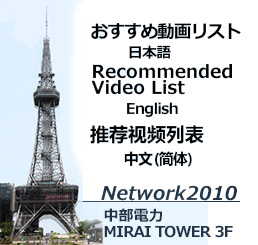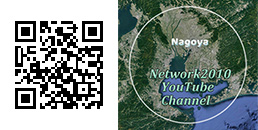- Nagoya in the Edo period(1603-1868)
- ①The Okehazama ancient battlefield
- ②Arimatsu to Miya post‐town
- ③Miya post-town
- ④Atuta Shrine
- ⑤Atsuta~Furuwatari
- ⑥Tachibana-cho
- ⑦Osu Kannon Temple
- ⑧Osu Monzencho
- ⑨Shirakawa Park
- ⑩Nagoya Castle Town 01
- ⑪Nagoya Castle Town 02
- ⑫Toshogu Shrine Festival
- ⑬Horikawa River1
- ⑭Horikawa River2
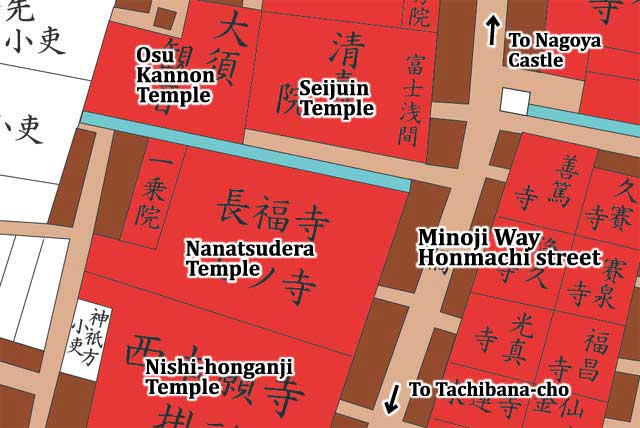
Osu kannon circumference map
In Monzen-cho, many temples were relocated from Kiyosu(the former capital of Owari clan) by Tokugawa Ieyasu in early stages of the Edo period . Nanatsudera temple was also relocated from Kiyosu.It has been known for the three-storied pagoda burned down by World War II, or possession of "Issaikyo(complete Buddhist scriptures)". Playhouses and japanese tea shops were located in the precincts of the temple, and it had been crowded. Osu Kannon of the Shingon sect was relocated from Hashima City in Gifu Prefecture. This temple has the "Shinpukuji library" which owns many valuable books. In the time of the seventh feudal lord Tokugawa Muneharu,the neighborhood of Osu had been crowded with a play, Yose (a storytellers' theater), spectacle, etc., and developed as the leading amusement quarter in Nagoya Castle town.
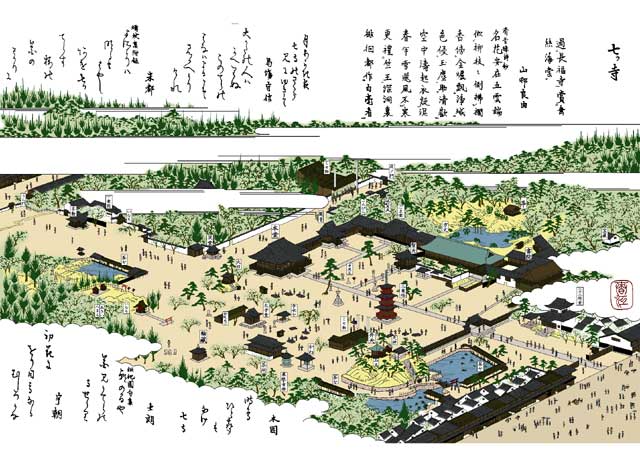
Nanatsudera Temple
It has been told that this temple was founded by the famous priest Gyoki in 735. Although it transferred to the Kiyosu in 1591, since the capital of Owari clan relocated to Nagoya, it transferred to Nagoya. The three-storied pagoda contributed by the second feudal lord Tokugawa Mitsutomo was located in the precincts of the temple. This temple owns Shinpukuji library which possesses many valuable books, such as the oldest manuscript of Kojiki (Japan's oldest historical record).
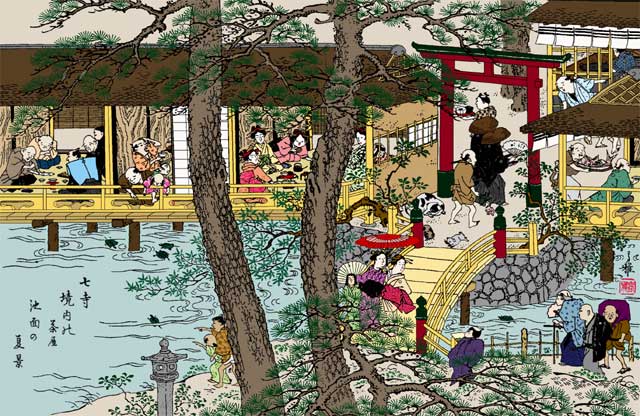
The precincts of Nanatsudera Temple
visitors to the temple passed the pleasant time, having seen the garden or drinking tea.
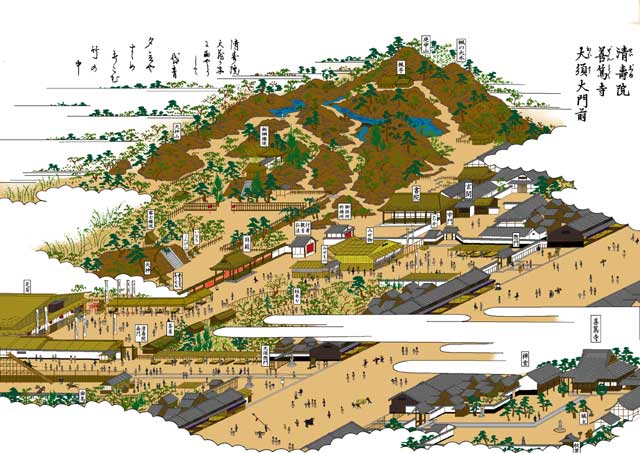
Seijuin Temple
Seijuin which was a temple of Shugendo (Japanese mountain asceticism-shamanism incorporating Shinto and Buddhist concepts) was built on Nagonoyama ancient tomb mound. After the Meiji Restoration, the Meiji government promoted the separation of Buddhism and Shintoism. Therefore, Seijuin was destroyed and the Namikoshi park first established in Nagoya City opened on the former site. Since Tsurumai Park opened in 1909, the role was finished.
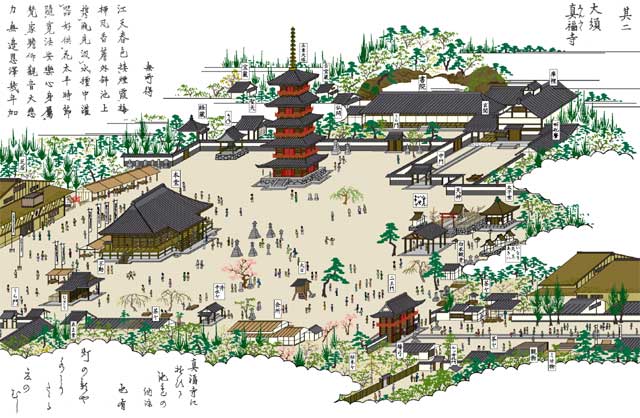
Osu Kannon Temple
Osu Kannon is a temple of the Shingon sect and was founded by Priest Nohsin in the Osu village (the present Hashima City) in 1333. The official name is Kitano-san-Shinpukuji-Hoshoin. In 1612, the lord of Inuyama Castle Naruse Masashige transferred to the its present location by the command of Tokugawa Ieyasu. This temple owns Shinpukuji library which possesses many valuable books, such as the oldest manuscript of Kojiki (Japan's oldest historical record).
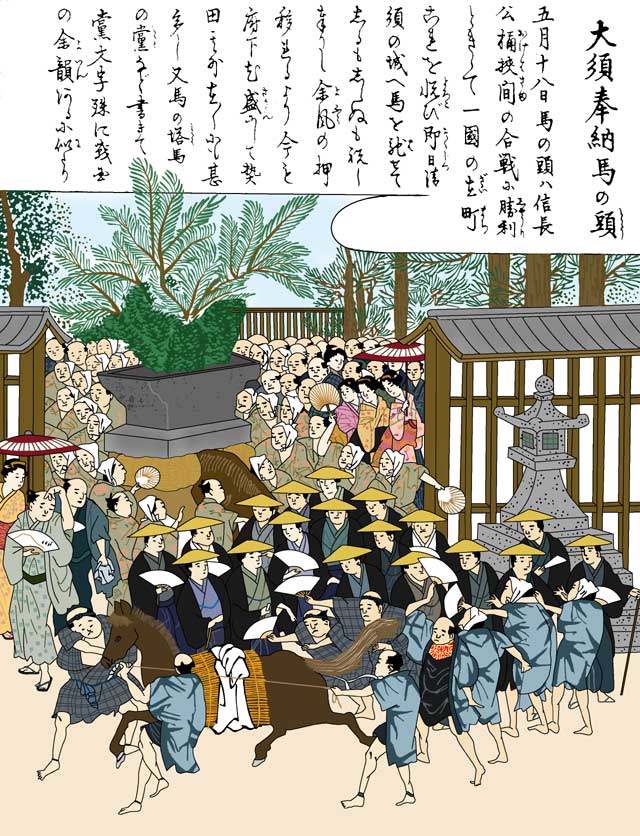
Osu Uma-no-to
It has been considered as origin that the peoples of this district who were pleased with the victory of Oda Nobunaga in the battle of Okehazama, led the decorated festival horse and ran to congratulation. At the present,the local children parade shopping street with praying for good health, while they are shouldering a horse-headed Mikoshi(a portable shrine).
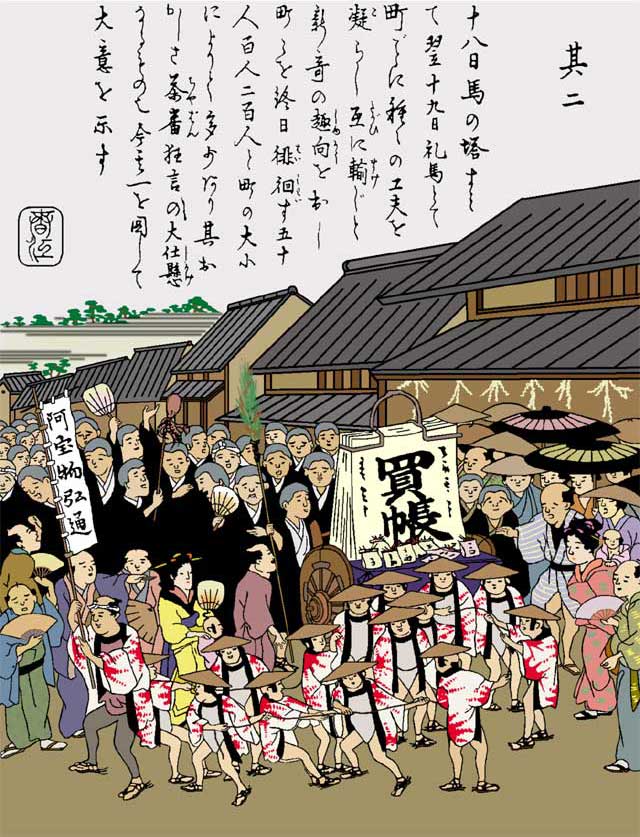
Osu Uma-no-to
Map
Video
【Video】Osu Daido Chonin Matsuri Festival

